Abstract
The frequency of man-biting by mosquitos depends upon the amount of contact between man and mosquito, which in turn depends upon the behaviour patterns of both. In order to examine these relationships in an area with a high incidence of malaria, a study was made in 1965 of the nocturnal movements and of mosquito biting habits in five localities in the malarious area of Colombia that were in the thirteenth or fourteenth cycle of biennial DDT spraying.
The populations were classed into five age- and sex-groups, i.e., men and women over the age of 15 years, boys and girls from 5 to 15 years, and children under 5. A number of differences in the habits of these groups were discovered in relation to time spent indoors or outside, but close to, the house.
The habits of the four main anopheline vector species were studied in relation to human activities. For three of the species (A. albimanus, A. darlingi, A. nuneztovari) it is suggested that a low relative importance of outdoor biting is caused not by a density-dependent factor but by an anopheline gonotrophic cycle or by relative humidity or both. The fourth species (A. punctimacula), common only at one locality, displayed a complex pattern of biting behaviour with, however, a much greater frequency of outdoor biting than in the other species.
It is considered that in these localities malaria is probably transmitted mainly inside sprayed houses by vectors that are susceptible to the insecticides in use but which are not sufficiently reduced in numbers or in life-expectancy to interrupt the transmission of the parasite.
Full text
PDF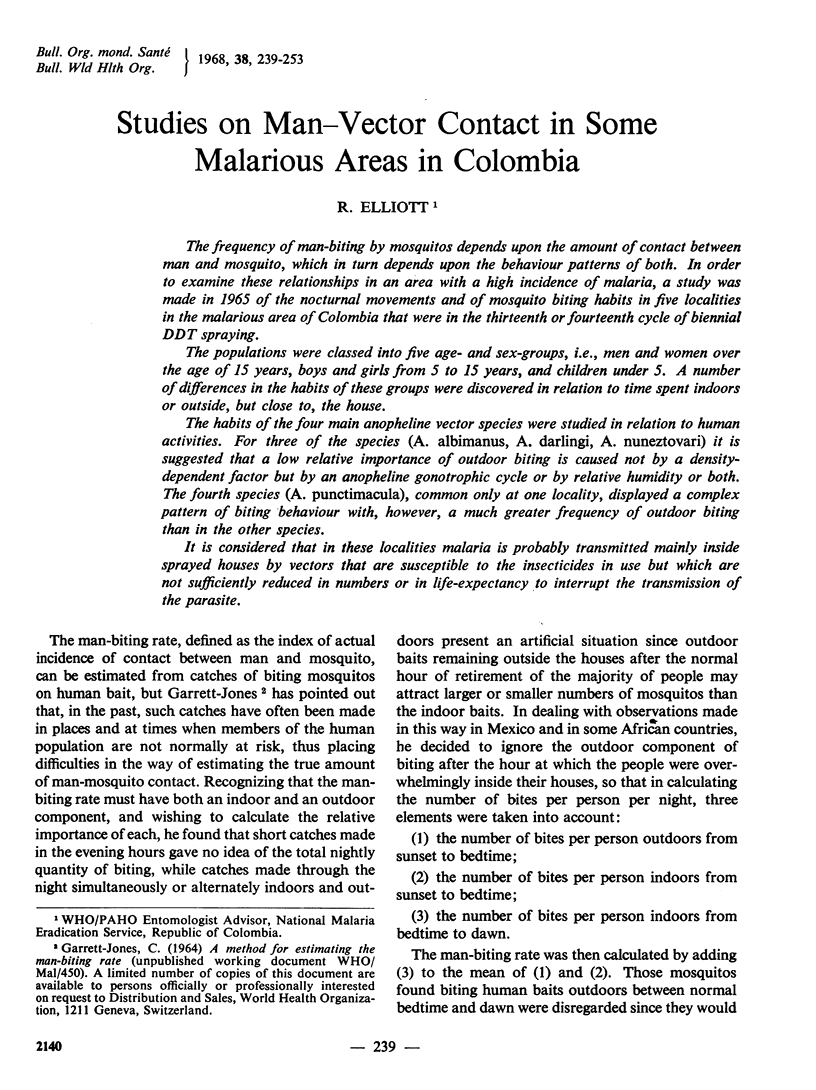
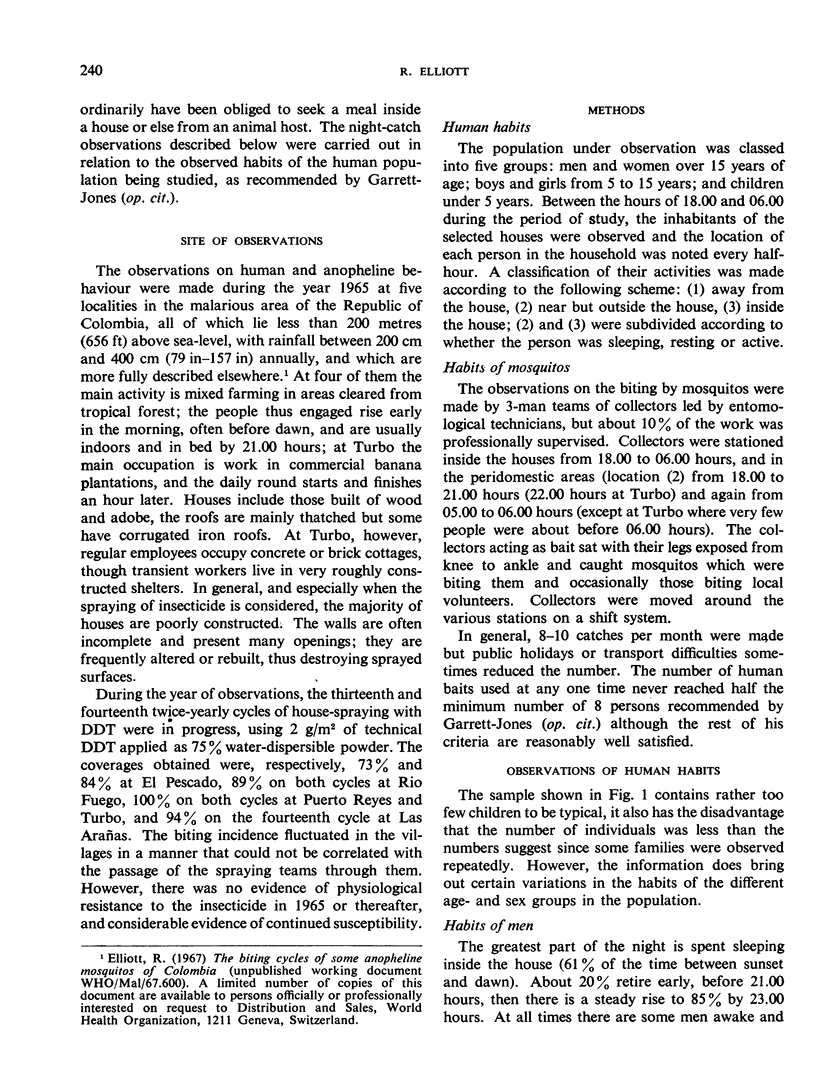
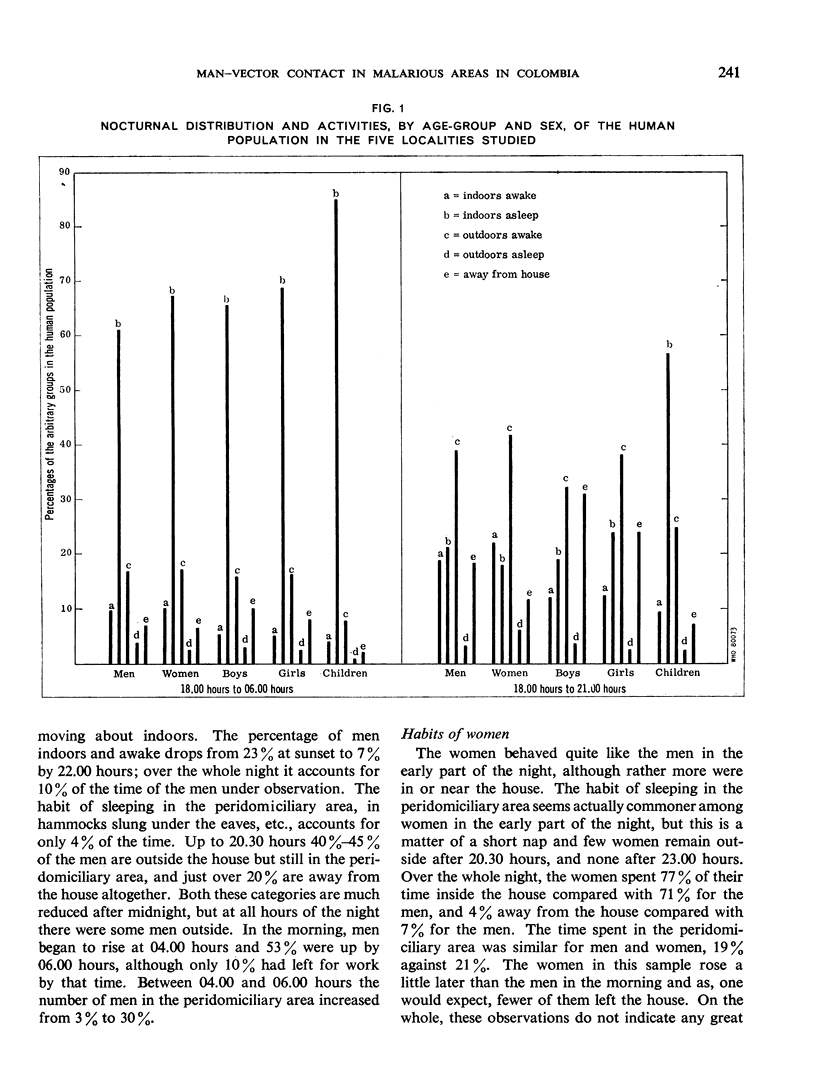
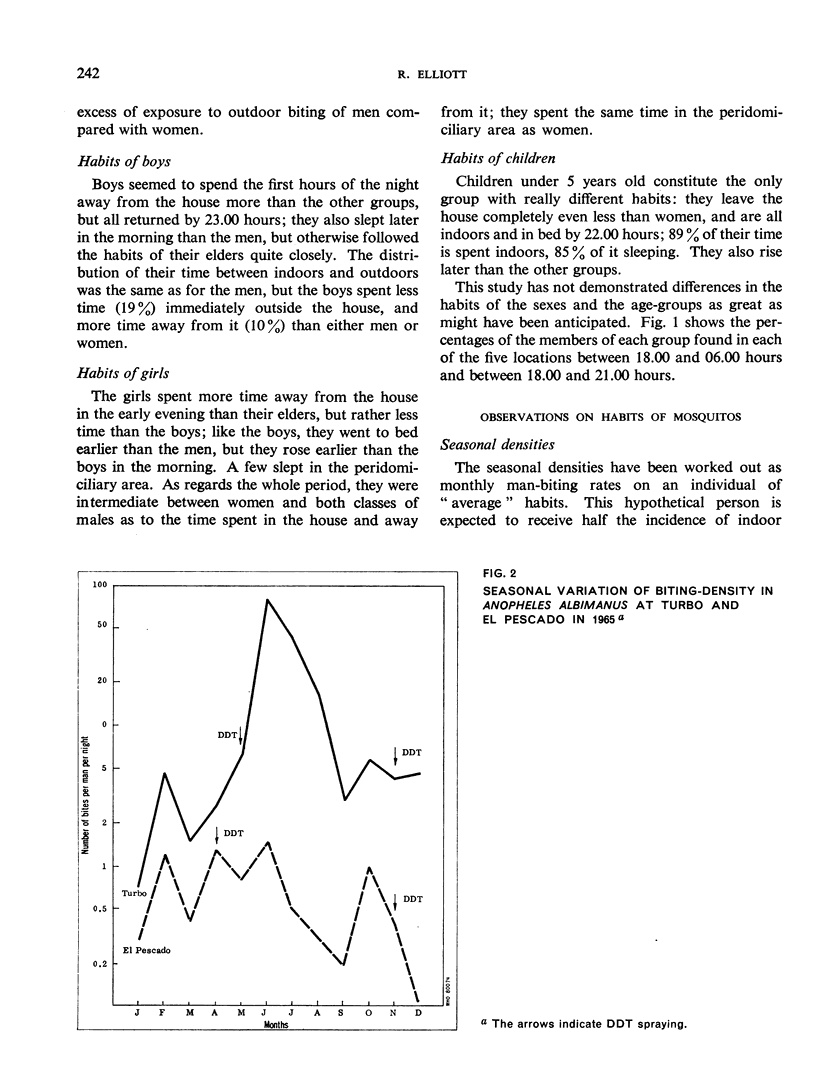
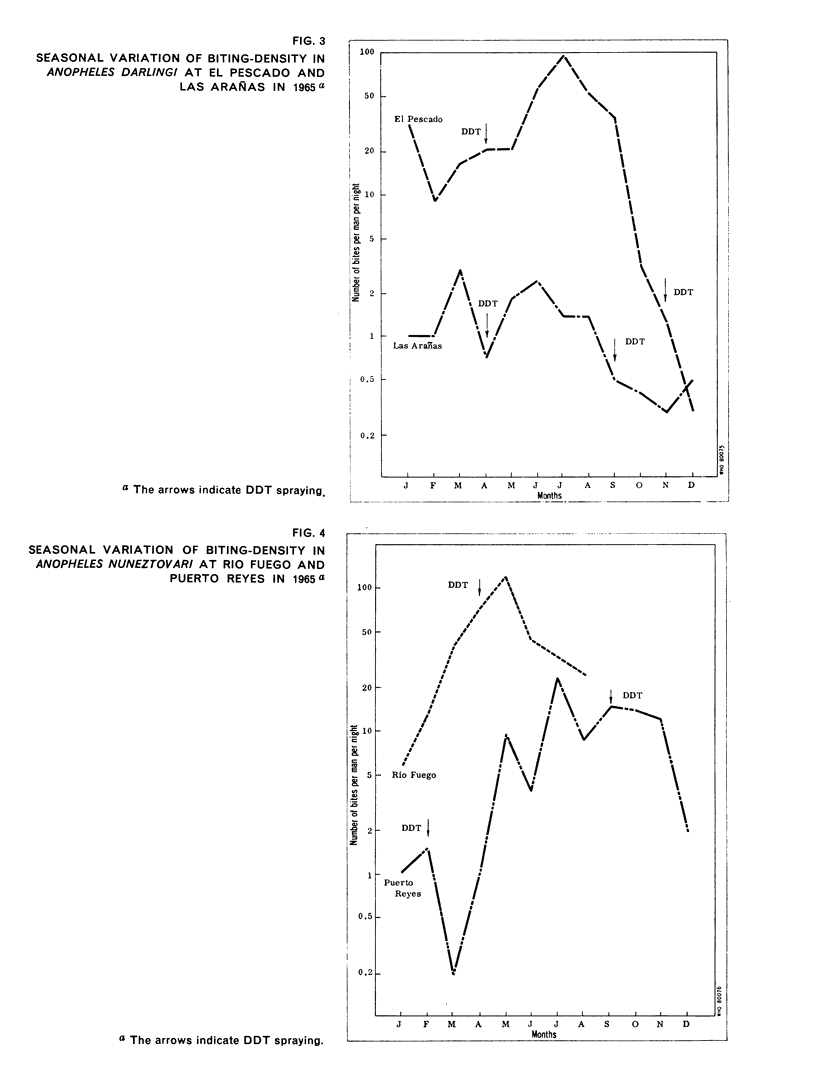
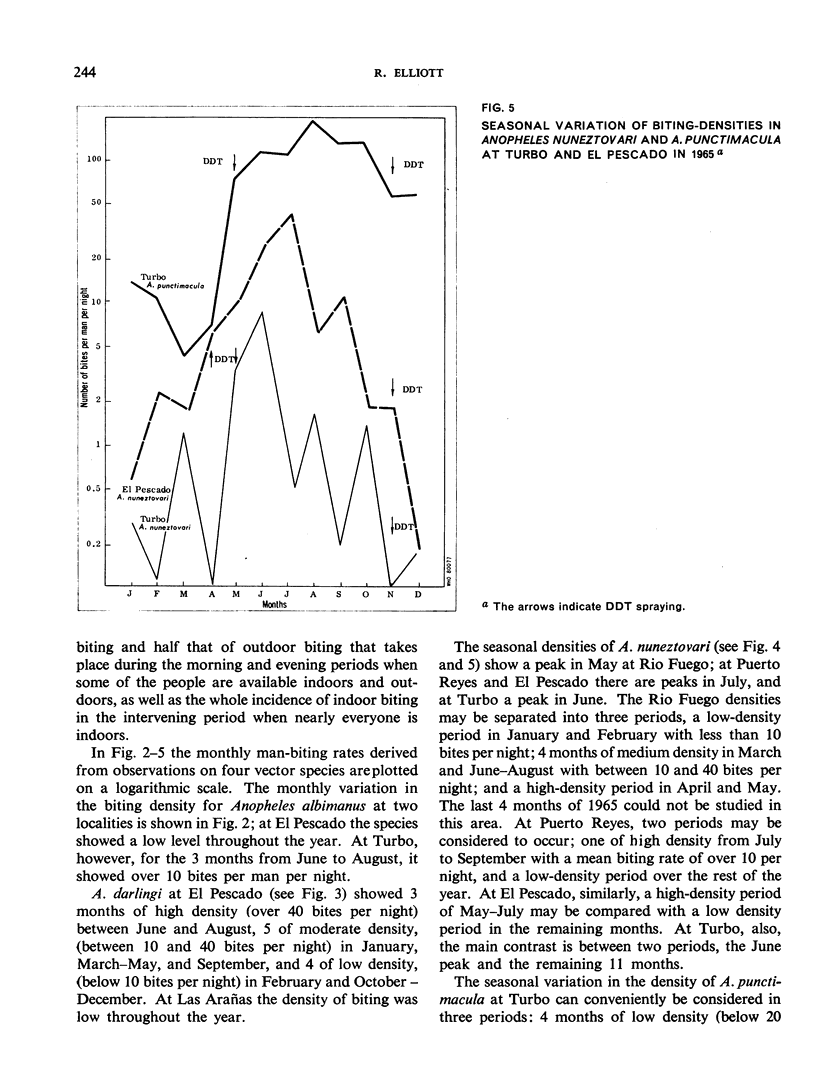

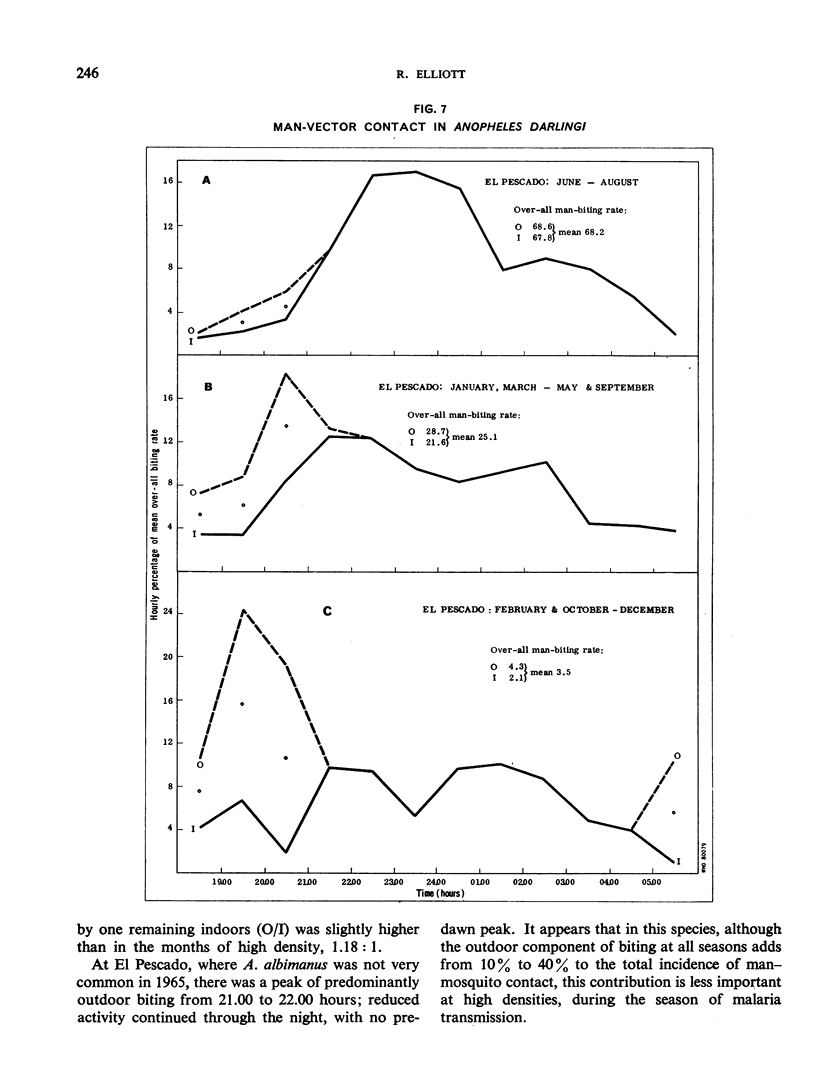
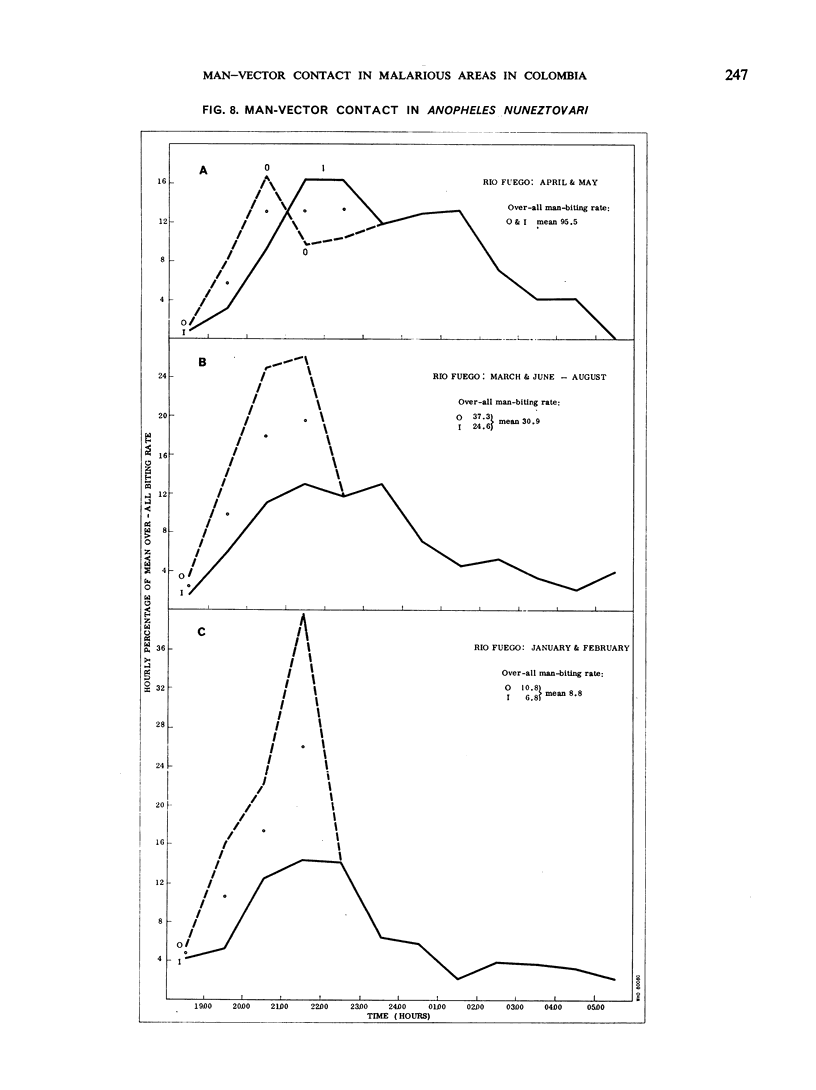
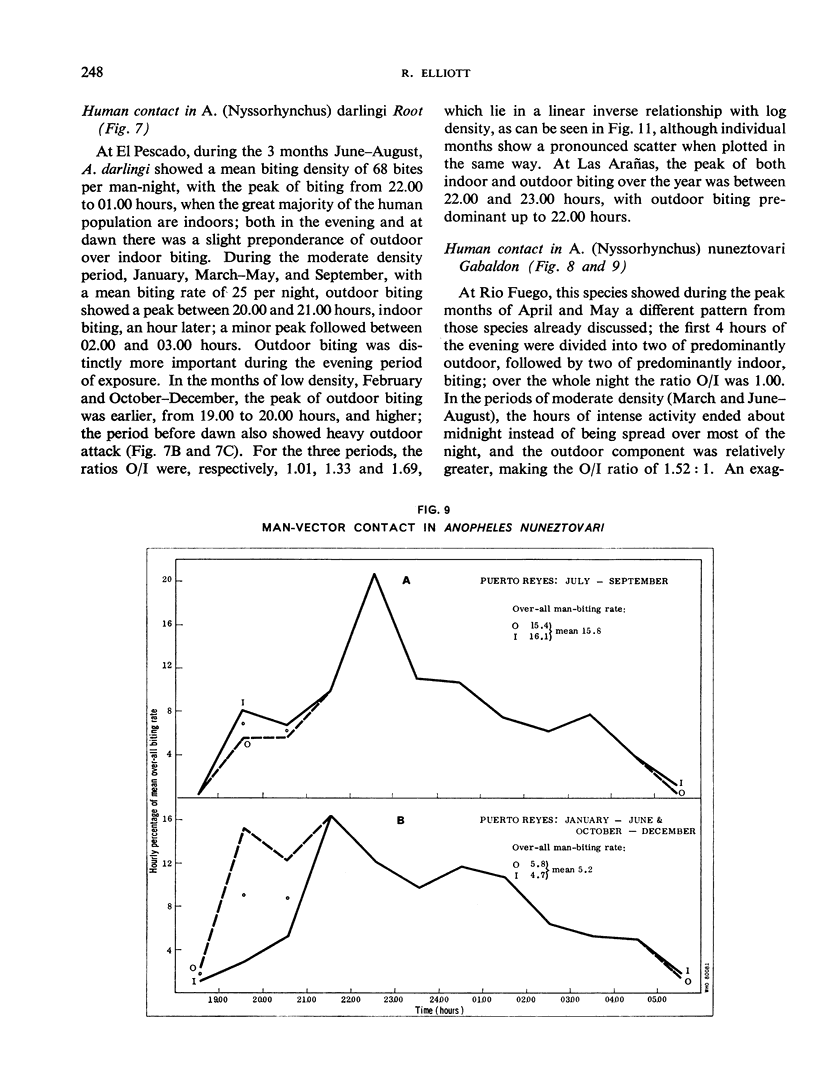
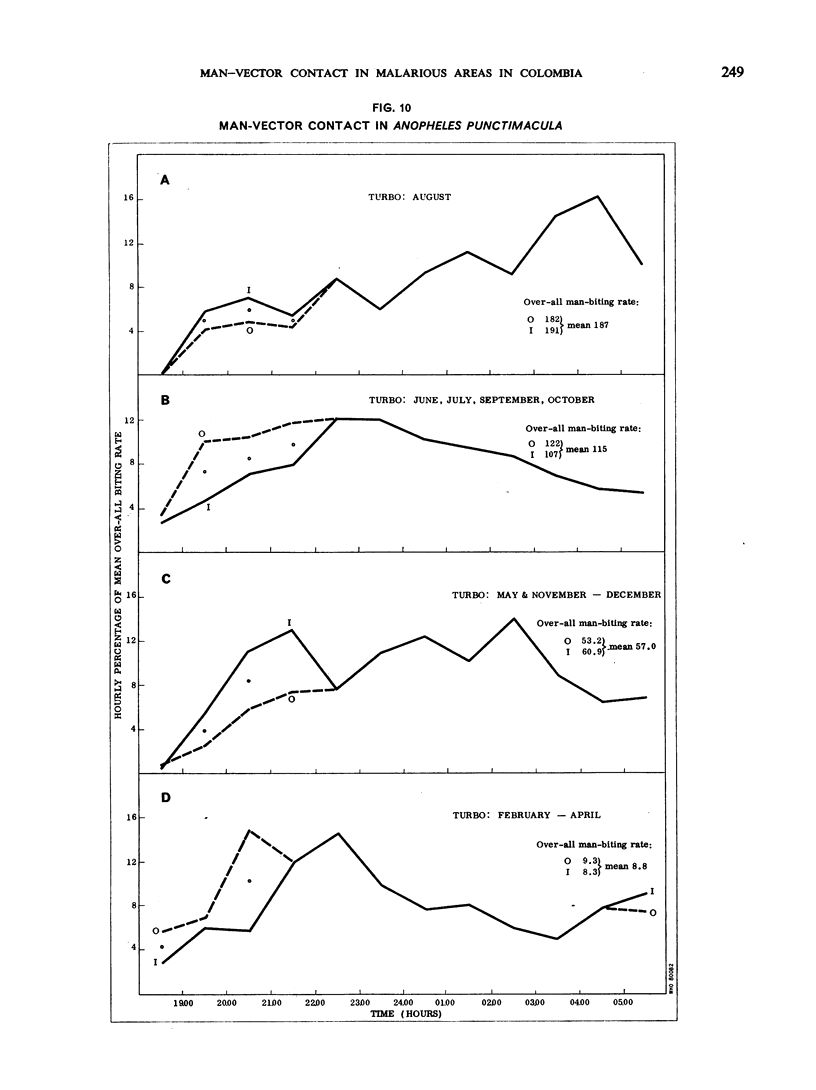
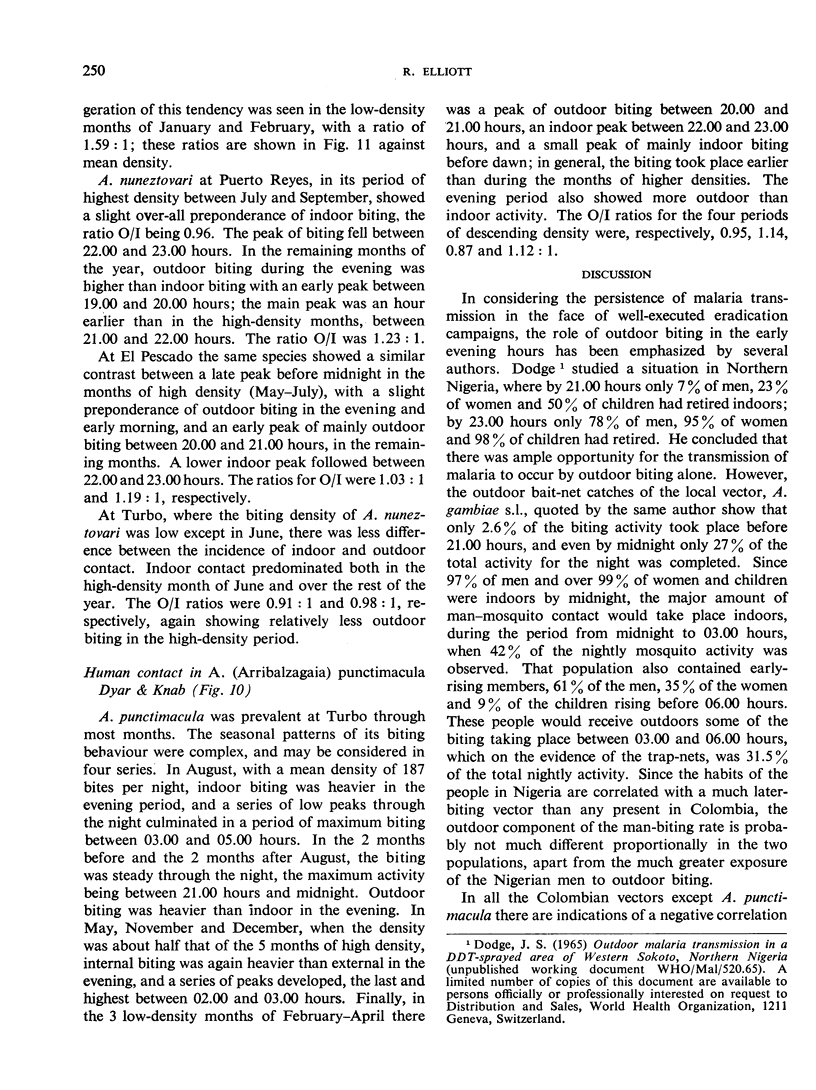
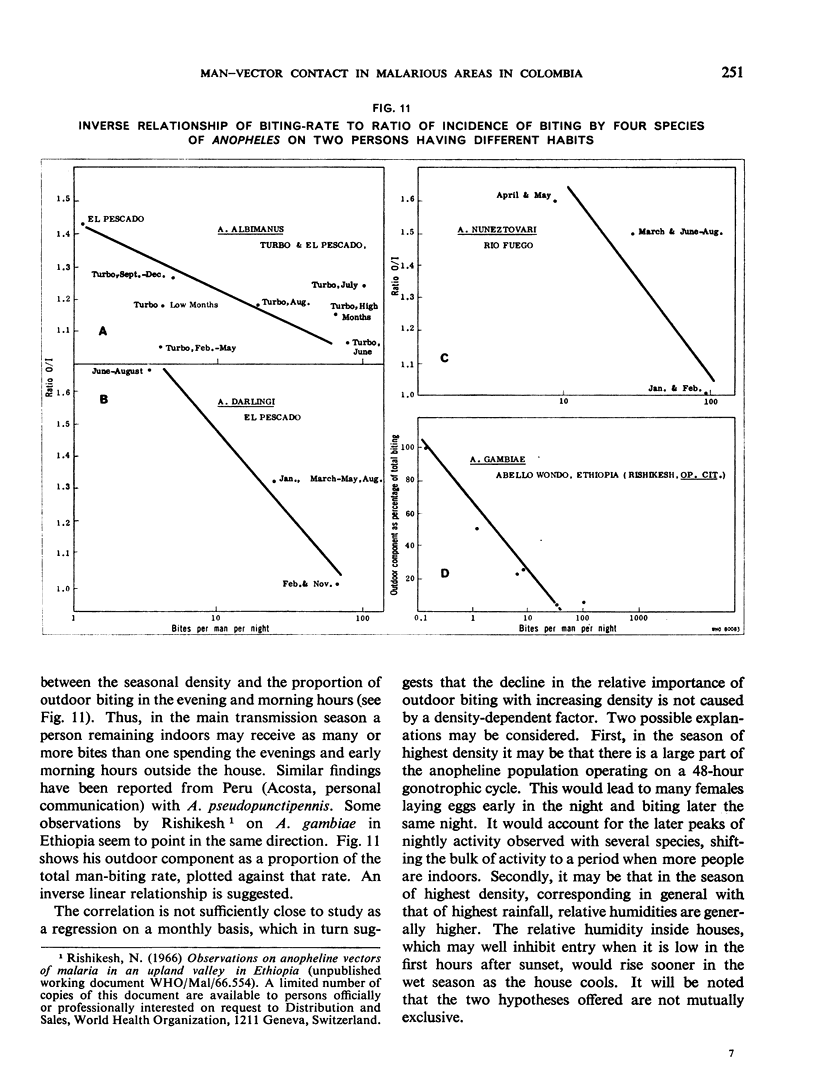
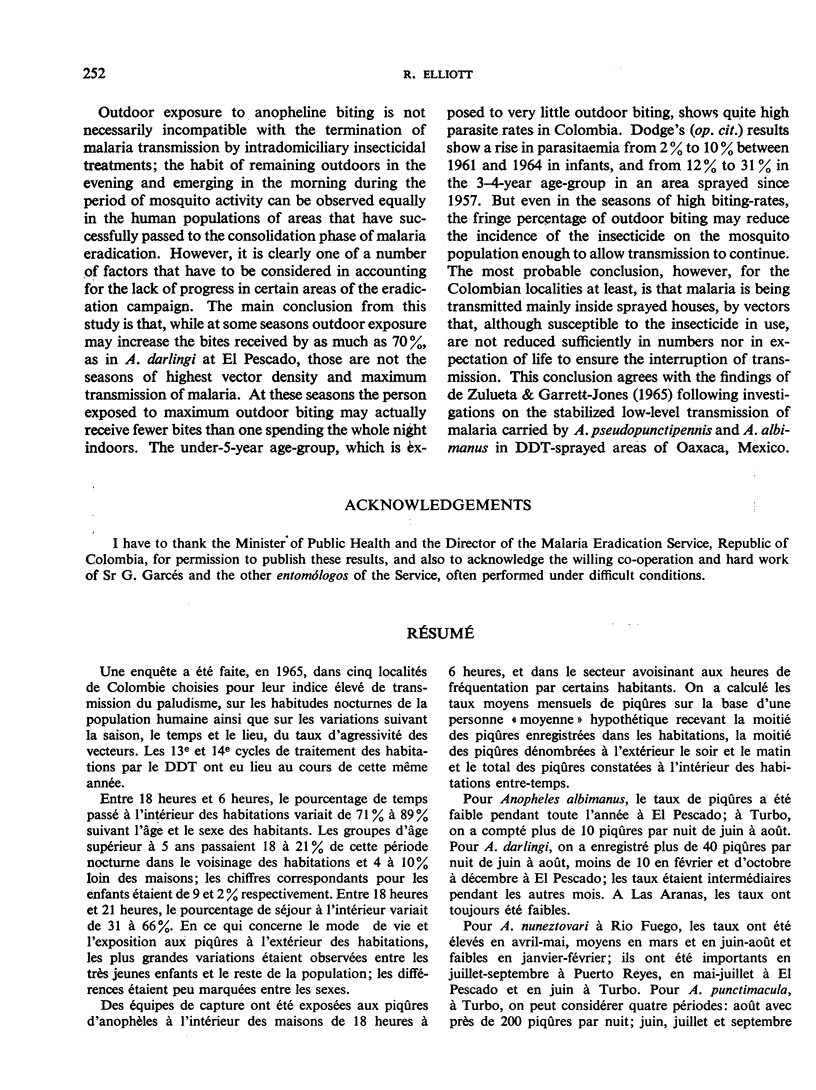
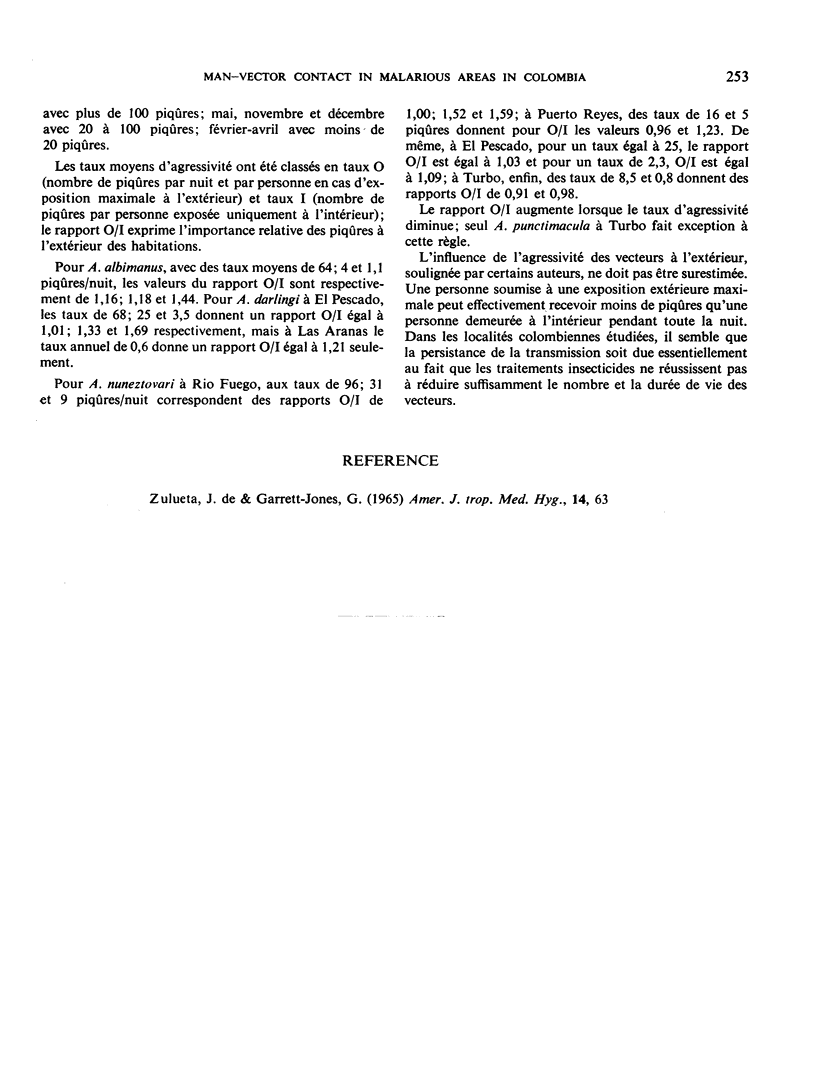
Selected References
These references are in PubMed. This may not be the complete list of references from this article.
- DEZULUETA J., GARRETT-JONES C. AN INVESTIGATION OF THE PERSISTENCE OF MALARIA TRANSMISSION IN MEXICO. Am J Trop Med Hyg. 1965 Jan;14:63–77. doi: 10.4269/ajtmh.1965.14.63. [DOI] [PubMed] [Google Scholar]


